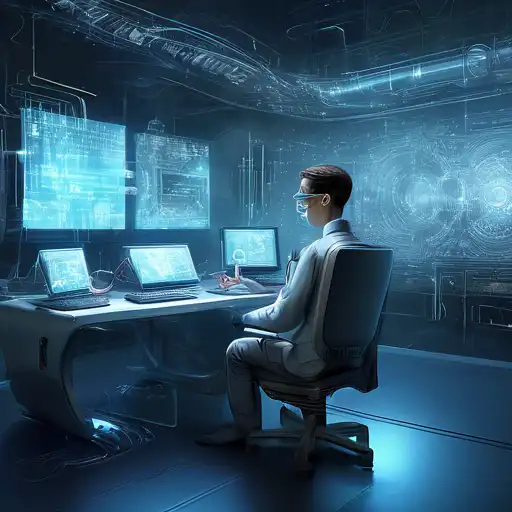Introduction to Computer Vision Technology
Computer vision technology has seen remarkable advancements in recent years, transforming how machines interpret and understand the visual world. From facial recognition systems to autonomous vehicles, the applications of computer vision are vast and varied. This article delves into the latest breakthroughs in the field, highlighting how these innovations are shaping industries and everyday life.
Key Advancements in Computer Vision
The field of computer vision has evolved significantly, thanks to advancements in artificial intelligence (AI) and machine learning. Here are some of the most notable developments:
- Deep Learning Models: The introduction of deep learning has revolutionized computer vision, enabling more accurate and efficient image recognition and processing.
- Real-time Processing: Modern algorithms can now process visual data in real-time, a critical requirement for applications like surveillance and autonomous driving.
- 3D Image Recognition: Advances in 3D imaging techniques have opened new possibilities in medical imaging and augmented reality (AR).
- Edge Computing: By processing data locally on devices, edge computing has reduced latency and improved privacy in computer vision applications.
Applications of Advanced Computer Vision
The advancements in computer vision technology have led to its adoption across various sectors. Below are some key applications:
- Healthcare: From diagnosing diseases with greater accuracy to assisting in surgeries, computer vision is making healthcare more efficient and effective.
- Retail: Automated checkout systems and personalized shopping experiences are just a few ways computer vision is transforming the retail industry.
- Automotive: Autonomous vehicles rely heavily on computer vision to navigate safely and efficiently.
- Security: Enhanced surveillance systems use computer vision to identify threats and unusual activities in real-time.
Challenges and Future Directions
Despite its progress, computer vision technology faces challenges such as data privacy concerns and the need for vast amounts of training data. However, ongoing research in areas like AI and machine learning promises to address these issues, paving the way for even more innovative applications.
The future of computer vision is bright, with potential breakthroughs in areas like emotion recognition and more sophisticated AR experiences. As technology continues to evolve, the possibilities are limitless.
Conclusion
The advancements in computer vision technology are reshaping our world, offering new ways to interact with machines and interpret visual data. From improving healthcare outcomes to enhancing security systems, the impact of these innovations is profound. As we look to the future, the continued evolution of computer vision promises to unlock even more possibilities, making our lives easier and more connected.
